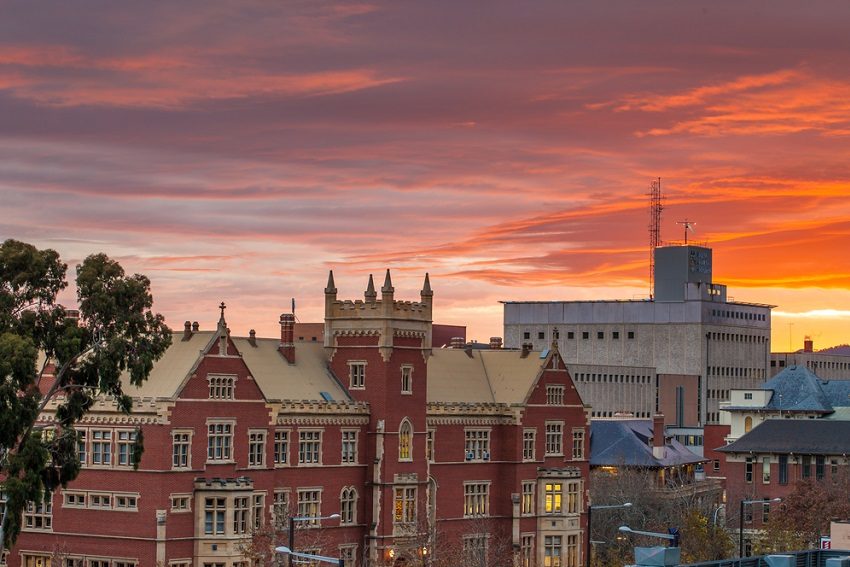Montefiore: East End Upheaval After RAH Moves West? It's Bunkum!

Contrary to popular assumption, the move by the old RAH to the West End of the city will not trigger an economic collapse at the East End retail, pub and restaurant precinct. A December 2015 report says it’s bunkum.
Sir Monty is not used to snow during South Australian winters, especially around the city and park lands. But as winter proceeds there are hints that we’re going to get a lot, but not of the climatological type. It’s the snow of government spin, especially about what must be done with portions of the seven hectares of park lands on which is built the old Royal Adelaide Hospital. This is particularly when the old RAH closes and moves to the new RAH site, due west. Park lands advocates want to see the non-listed buildings razed, with the land reverting to green space. Others have suggested alternative, practical public uses for some buildings. But the development industry sniffs ‘opportunity’ and the government is listening. There are plans for top-end residential apartments for rich investors, on 99-year park land leases – in effect private ownership. To achieve that, spin masters need to be able to inject an urgent reason to justify a developers’ building spree to erect apartment towers on public land. The snow of spin has now been swirling quietly about the East End for more than a year, but many South Australians haven’t noticed. That’s because portions of it are folded quietly into media interviews, and quickly melt into the public subconscious. Here’s planning minister John Rau, reported online in May 2015: “We’ve already masterplanned that site in terms of the physical development of the site, (and) in terms of the functional part of it, it’s pretty clear what we’re looking for – we’re looking for something that would retain economic activity and people in the East End.” You didn’t notice? Neither did many others. That line has been repeated this year, too, as senior planning bureaucrats, privy to the confidential plans, have also parroted the spin, as has the opposition leader. In May 2016, a Rundle Mall executive also claimed that running a tram down North Terrace would be vital to keep the East End ‘vibrant’. Then there’s the media, one of which last month editorialised that an “inspiring project” was crucial to “ignite activity at the East End”. It’s all bunkum. For a start, there are already plenty of residents in the East End, and things are ‘vibrant’ despite their mediocre spending power. Moreover, a 71-page report, by consultants Hames Sharley MacroPlan Dimasi*, presented to Town Hall on December 8, 2015, makes it clear that the hospital shift’s impact on East End businesses will be minimal in the long term, and only minor in the short term. It says: “The overwhelming majority of those that work in the RAH precinct live in regions outside of the Adelaide CBD and North Adelaide, indicating a likely very low impact on the residential population of the East End from the RAH relocation.”
 Will the new RAH revitalise the West End at the expense of the East?
Will the new RAH revitalise the West End at the expense of the East?
The current estimated hospital staff and visitor spend in the East End is $14.3m annually, but if this all disappeared when the hospital moves west, it would still only comprise 11 percent of East End retail spending. Perhaps surprisingly, however, the one aspect likely to be affected (for a brief period) is fast food (takeaway) sales, but restaurant sales, cultural activities (festivals), bars, clubs and nightclub patronage as well as high-end clothing and fashion sales are unlikely to be strongly affected because the people who patronise such services are not linked to the worker population at the hospital. Adelaide University students comprise the East End’s major residential demographic, with the population averaging between 20 and 34 – transient and mostly renting. They are mostly too poor to be of economic relevance. “The East End functions primarily as a destination for people from across a wide region, attracted by the region’s entertainment, retail, culture and nightlife offerings,” the report says. Even if top-end residential apartments did mushroom at the old RAH site, some features of the existing East End demographic would militate against significant spinoff. For example, as a result of residents’ low median age, the report notes that the East End’s lack of product/service diversity “reduces business opportunities targeted at older (or younger) age groups.” And then there’s the East End’s ‘location’ problem – with no easy access from the northern side of North Terrace. The report says: “There is a lack of precinct permeability, with the only access to Rundle Street from North Terrace via East Terrace, Frome Street and Pultney Street. In addition, Ayers House represents a significant barrier to movement…” It goes to show that, while state government spin is attempting to embed a convincing economic rationale to justify private residential development at the old RAH site, in terms of the future of the East End it’s not supported by the evidence. But old habits die hard. Residential towers leased for 99 years would set a highly controversial park lands precedent. It demands the highest order of spin, as well as a thick, constant application while the developers’ bids are being fine-tuned. Look outside – it’s still snowing. *Economic and social impact on the East End of moving the Royal Adelaide Hospital – final draft November 2015. Hames Shirley MacroPlan Dimasi.